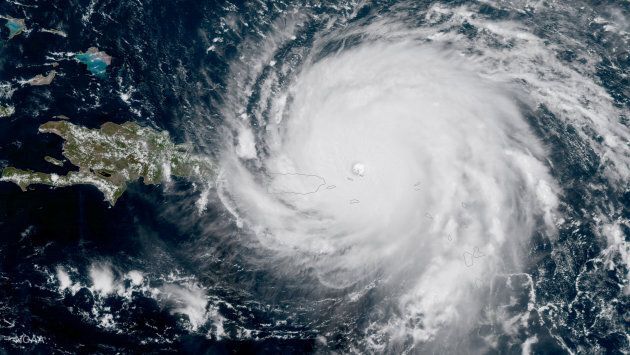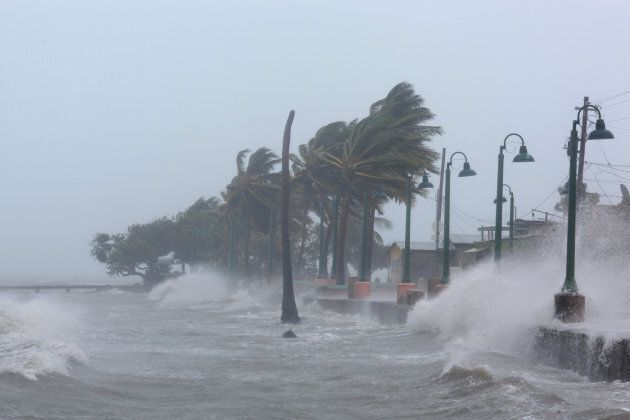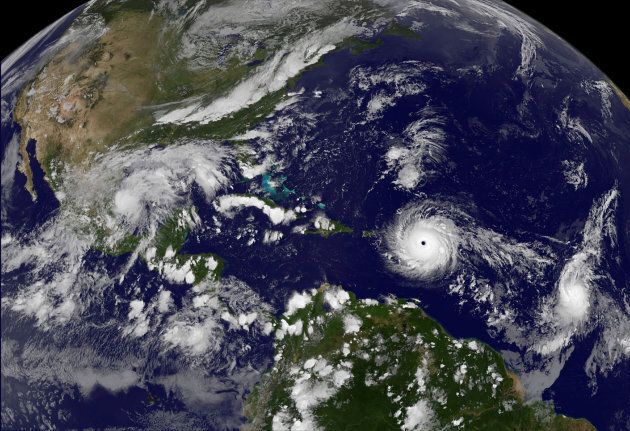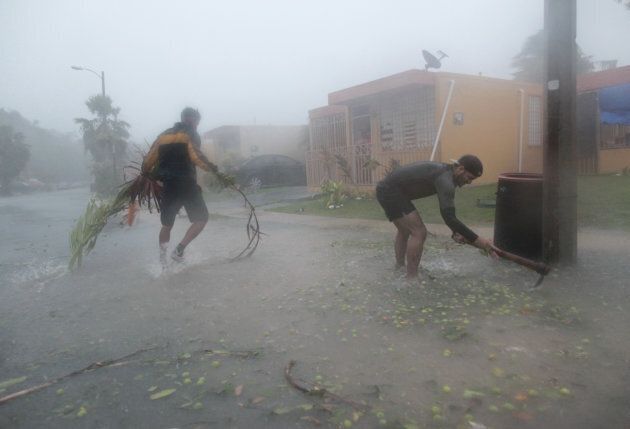
The monster hurricane Irma is barreling towards Florida after the eye of one of the most powerful Atlantic storms in history smashed a string of Caribbean island, killing 14 people.
With winds of about 290 km per hour the storm -- which is two thirds the size of NSW -- has ravaged small islands in the northeast Caribbean in recent days, including Barbuda, Saint Martin and the British and U.S. Virgin Islands, ripping down trees and flattening homes and hospitals.
It is one of three hurricanes in the Atlantic threatening to make landfall, and was the strongest hurricane ever recorded in the Atlantic Ocean and one of the five most forceful storms to hit the basin in 82 years, according to the US National Hurricane Centre (NHC).
Irma's winds dipped on Thursday to 280 km per hour as hurricane soaked the northern coasts of the Dominican Republic and Haiti and brought hurricane-force wind to the Turks and Caicos Islands.


It remained an extremely dangerous Category 5 storm, the highest designation by the National Hurricane Center (NHC), Reuters reports.
Irma was about 65 km south of Turks and Caicos and is expected to bring 6-meter storm surges to the Bahamas later Thursday, before moving to Cuba and plowing into southern Florida as a very powerful Category 4 on Sunday, with storm surges and flooding due to begin within the next 48 hours.
Across the Caribbean authorities rushed to evacuate tens of thousands of residents and tourists in the path of the storm.
On islands in its wake, shocked locals tried to comprehend the extent of the devastation while simultaneously preparing for another major hurricane, Jose, currently a Category 3 and due to hit the northeastern Caribbean on Saturday.
It was the first time the Turks and Caicos islands had experienced a Category 5 storm, said Virginia Clerveaux, director of Disaster Management and Emergencies.
"We are expecting inundation from both rainfall as well as storm surge. And we may not be able to come rescue them in a timely manner," she said in comments broadcast on Facebook.
The few tourists who remained on the Turks and Caicos islands were in hotels, as were some locals.
A Reuters witness described the roof and walls of a well-built house shaking hard as the screaming storm rocked the island of Providenciales and caused a drop in pressure that could be felt in people's chests.
In Miami, hundreds lined up for bottled water and cars looped around city blocks to get gas on Thursday in panicked preparations. Gas shortages in the Miami-Fort Lauderdale area worsened on Thursday, with sales up to five times the norm.
"To the people of Florida, we just want you to protect yourselves, be very very vigilant and careful," said U.S. President Donald Trump, who owns the waterfront Mar-a-Lago estate in Palm Beach, Florida as well as a property on the French side of Saint Martin, an island devastated by the storm.
A mandatory evacuation on Georgia's Atlantic coast was due to begin on Saturday, Governor Nathan Deal said.

DEATHS TOLL RISES
In the U.S. Virgin islands, four people died, a government spokesman said, and a major hospital was badly damaged by the wind. A U.S. amphibious assault ship arrived in the U.S. Virgin Islands on Thursday and sent helicopters for medical evacuations from the destroyed hospital.
Barbuda, where one person died, was reduced "to rubble", according to Prime Minister Gaston Browne. In the British overseas territory of Anguilla another person was killed, while the hospital and airport, power and phone services were damaged, emergency service officials said.
French Prime Minister Edouard Philippe said four bodies were recovered on the tiny French-Dutch island of Saint Martin, which was hit hard.


"It is an enormous disaster. Ninety-five percent of the island is destroyed. I am in shock," Daniel Gibbs, chairman of a local council on Saint Martin, told Radio Caribbean International.
Television footage from the island showed a damaged marina with boats tossed into piles, submerged streets and flooded homes. French President Emmanuel Macron spoke with British Prime Minister Theresa May on Thursday to coordinate an emergency humanitarian response.
Three people were killed in Puerto Rico and around two-thirds of the population lost their electricity, Governor Ricardo Rossello said after the storm rolled by the U.S. territory's northern coast. A surfer was also reported killed in Barbados.
Cuba started evacuating some of the 51,000 tourists visiting the island, particularly 36,000 people at resorts on the picturesque northern coast. That included all Canadian tourists, who Cuban Tourism Minister Manuel Marrero estimated made up 60 percent of foreign visitors in the country's keys.
The storm activity comes after Harvey claimed about 60 lives and caused property damage estimated to be as much as $180 billion in Texas and Louisiana.
(Additional reporting by Scott Malone in San Juan, Jorge Pineda in Santo Domingo, Guy Delva in Port au Prince, Makini Brice in Cap-Haitien, Haiti; Sarah Marsh in Caibarien, Cuba; and Daina Beth Solomon in Mexico City; Writing by Daniel Flynn and Frank Jack Daniel; Editing by Jeffrey Benkoe and Lisa Shumaker)